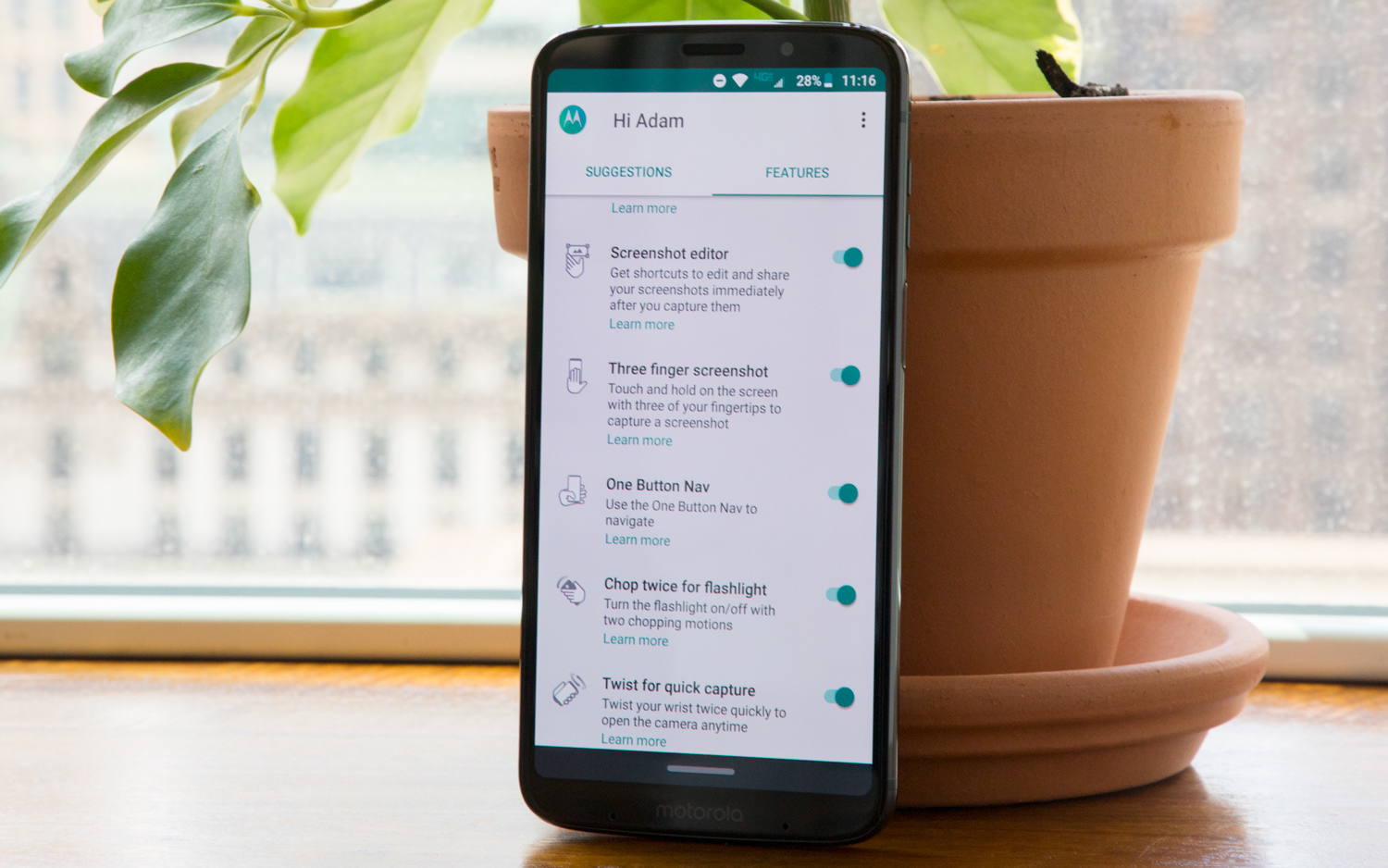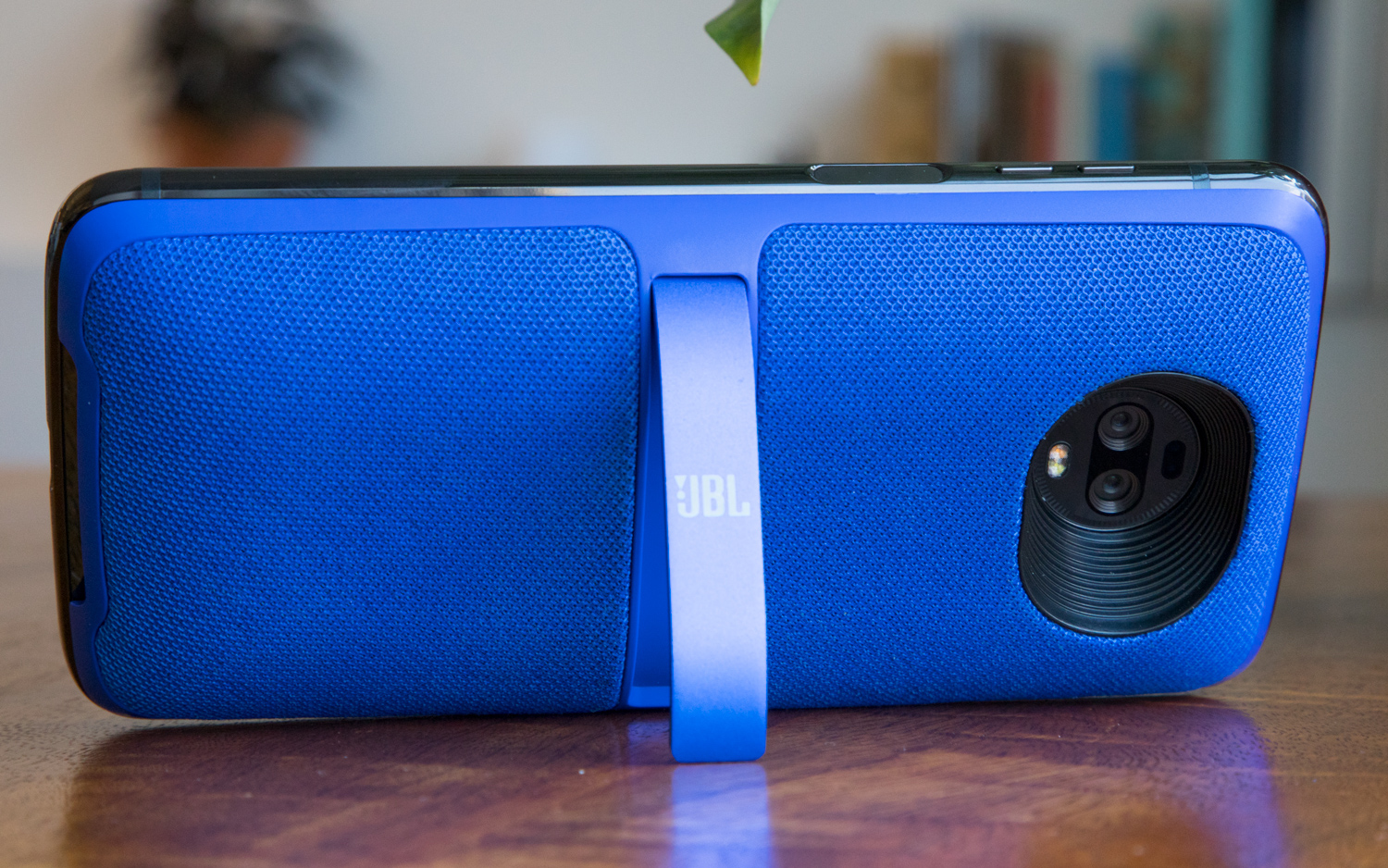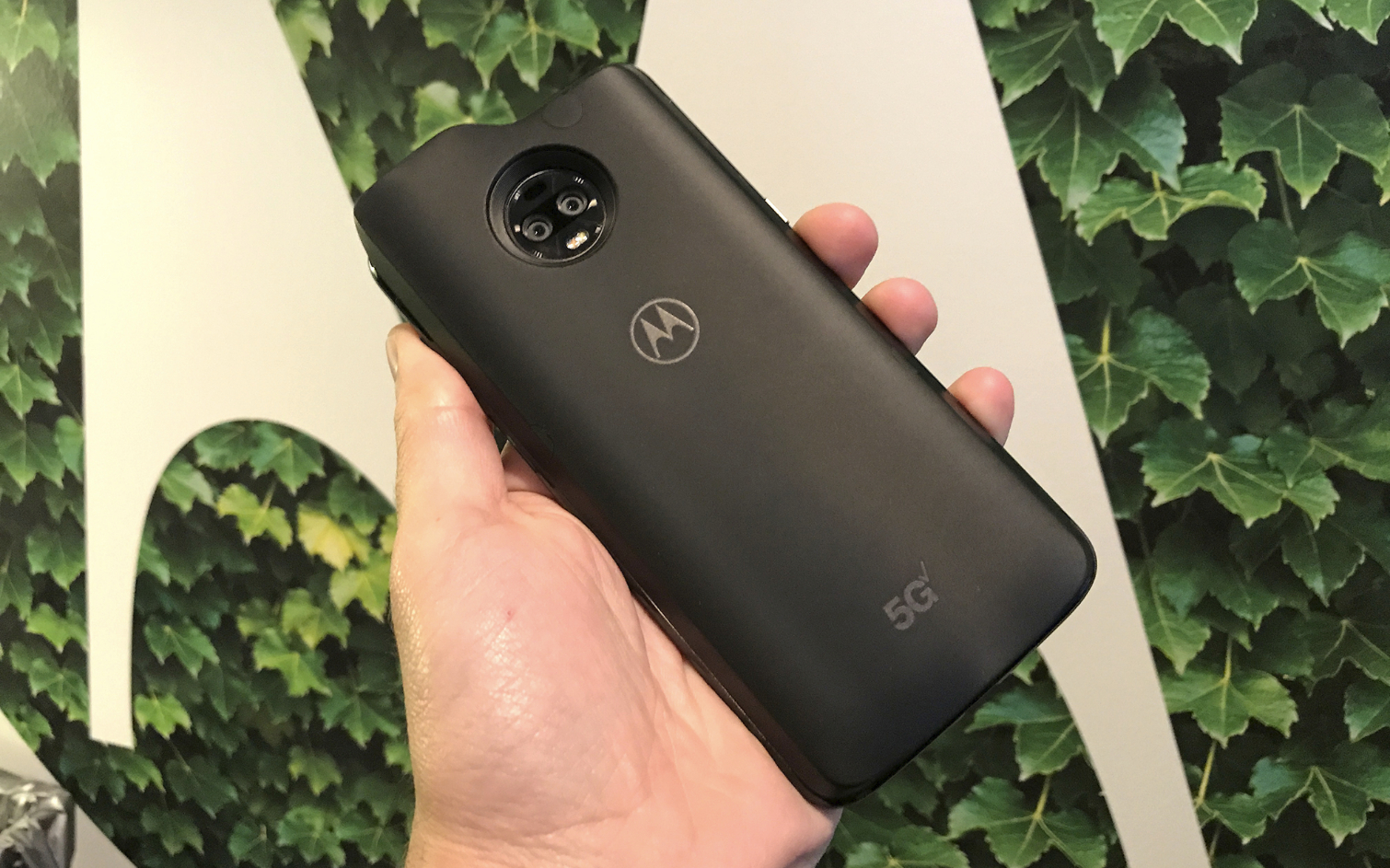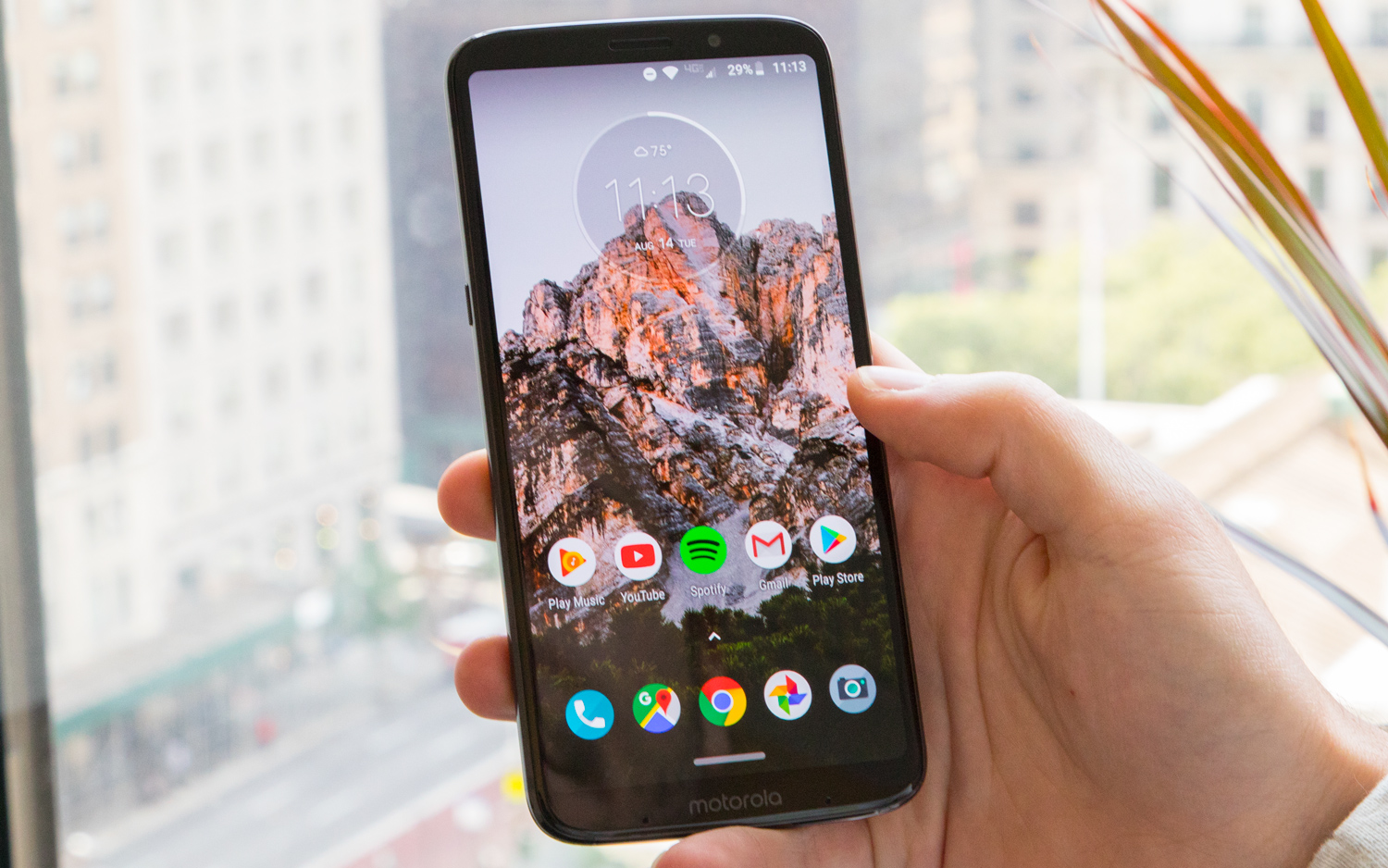Tom's Guide Verdict
Motorola's latest modular flagship may one day take us to an exciting 5G future, but it's an old soul at heart.
Pros
- +
Good performance for the money
- +
Nice OLED display
- +
Compatible with all Moto Mods
Cons
- -
5G mod is still months away
- -
Recycled, less-durable design
- -
Below-average battery life
- -
Mediocre cameras
- -
Verizon exclusive
Why you can trust Tom's Guide
Rather than imitating the parade of premium smartphones that have come before it, Motorola has chosen an unexpectedly conservative strategy with its latest flagship, the Moto Z3.
First off, this is a Verizon-exclusive handset — which is a bit unusual in this day and age, when you can get almost any high-end phone on any network. Second, the phone costs just $480, which makes it a decent value for those Big Red subscribers who can't use the $529 OnePlus 6 on their network of choice. Oh, and sometime next year, Motorola will release a Moto Mod that will also make the device 5G capable.
That low price may not make a whole lot of sense until you peer beneath the Moto Z3's familiar exterior. There you'll find last year's Snapdragon processor and even the same amount of memory and storage, making it — on paper at least — functionally a Moto Z2 Force in fresh clothes.
It all leaves the Moto Z3 feeling like quite the anomaly among flagship phones — albeit one that invites an interesting question: Is the trade-off of generation-old hardware worth it just to save a couple hundred dollars? For some of the Verizon faithful, it will be. However, Motorola's modular platform doesn't fully excuse its cost-cutting measures, and getting an early glimpse of 5G tomorrow feels like something of an empty promise when it means buying an outdated phone today.
Moto Z3 Specs
| Price | $480 |
| OS | Android 8.0 Oreo |
| Screen Size (Resolution) | 6-inch LCD (2160 x 1080) |
| CPU | Qualcomm Snapdragon 835 |
| RAM | 4GB |
| Storage | 64GB |
| microSD Slot | Yes, up to 512GB |
| Rear Camera | Dual: 12 MP (f/2.0) and 12 MP monochrome |
| Front Camera | 8 MP (f/2.0) |
| Battery Size | 3,000 mAh |
| Battery Life (Hrs:Mins) | 9:22 |
| Water Resistance | No |
| Size | 6.16 x 3.01 x 0.27 inches |
There are several reasons to make the Moto Z3 your next smartphone.

Decent value: It's hard to argue with $480. The Moto Z3 isn't quite Verizon's answer to the OnePlus 6 — after all, that attractively priced phone boasts more up-to-date specs. Yet, Moto's new phone is a serviceable alternative, not to mention much more well-rounded than the similarly specced, similarly priced Essential Phone.
When you consider that an iPhone 8 or Samsung Galaxy S9 will set you back at least $700, the Moto Z3 becomes even more compelling. For less than $500, Z3 owners get a 6-inch AMOLED display, a still-speedy Snapdragon 835 processor, dual-lens cameras equipped with Portrait Mode and access to Moto Mods.
Get instant access to breaking news, the hottest reviews, great deals and helpful tips.
Respectable performance: The Moto Z3 isn't going to set benchmarking records with its year-old Snapdragon 835 processor and 4GB of RAM — the same chip that drove the Samsung Galaxy S8 and Google Pixel 2. But the 835 is still plenty powerful for practically anyone, except maybe those who need to have the newest silicon on the market to play games like PUBG Mobile and Fortnite at the smoothest possible frame rates.

The Moto Z3 delivered a 6,020 score in Geekbench 4, a test that measures overall system performance. That's still shy of the Z2 Force, which hit 6,524, as well as a bit behind the Pixel 2's 6,282 result. Newer phones, like the Galaxy S9, routinely turn in scores topping 7,000.
3DMark's Sling Shot OpenGL ES 3.1 test, which deals in graphics performance, panned out similarly. Here, the Moto Z3 delivered 3,650 — in line with other 835-powered handsets — while the aforementioned Galaxy S9 finished at 4,617.
The AMOLED display: With a peak full-screen brightness of 564 nits, the Moto Z3's 6-inch AMOLED display far exceeds the 488-nit average and comes within striking distance of the iPhone X's 574 nits.

This screen employs a full-HD-plus resolution, which fits fewer pixels into the same space as Samsung's quad-HD-plus panels in its Galaxy S9 and S9+ while still looking sharp enough to the naked eye. The default Standard color setting only presents hues within the sRGB color space, which many will find muted and washed out. Conversely, you can easily opt for the Vibrant profile, which is less realistic but pleasingly saturated.
Motorola's flagship won't leave you yearning for a better display.
In that Vibrant mode, the Moto Z3 covered 228 percent of the sRGB spectrum and registered a Delta-E color accuracy figure of 0.37. Both scores are about the same as what we witnessed from the Galaxy S9, even though the Moto Z3 is several hundred dollars cheaper. Add to that the superior contrast that OLED technology provides, and Motorola's flagship won't leave you yearning for a better display.
Moto Mods provide some freedom: While Motorola opted not to package the Moto Z3 with a Power Pack battery mod, which it had done for the less powerful Z3 Play, all the same Moto Mods that have been released over the last two years are compatible with this Verizon-exclusive variant.

That ranges from the aforementioned battery-expanding accessories to a few different speaker attachments, a gamepad with physical buttons and inputs, a DSLR-like camera lens that replaces the phone's own and even a miniature Polaroid printer — just to name a few examples.
Your mileage with Moto Mods will vary, of course. Our own Marshall Honorof, proud owner of a Moto Z2 Play, says that, for special occasions, the unique platform allows him to transcend the limitations of his phone in a way that he never could with other devices.
Unfortunately, the mods themselves can still be quite pricey (we've yet to hear confirmation on the cost of that promised 5G mod, for one), and not all of them deliver on their promises. That said, those who have built up a collection of Mods in recent months can rest assured that it won't go to waste with the Moto Z3.
What We Don't Like
Old design and less durable: The Moto Z3 borrows a lot from its Moto Z predecessors, so it shouldn't come as a surprise that its design has seemingly been lifted straight from the Z3 Play.

It's a boring and safe choice, but not an entirely awful one: The Z3 Play is a handsome device. Its footprint is neither too small nor too big, it's got a slim profile, and, thanks to its new 18:9 aspect ratio, the bezels on this phone aren't excessively large. Additionally, Motorola stashed the fingerprint sensor in a cutout on the right edge, and it's a natural resting point for your thumb that works quite well.
In other ways, though, the Z3 feels like a massive step back. We lauded the Z2 Force for its ShatterShield display — a proprietary technology developed by Motorola that incorporated five layers of protection and even came with its own four-year warranty. The Z2 Force was the only device that survived every one of our smartphone drop tests (save for the one that involved water), and brushed off a 6-foot drop onto concrete with nary a crack, thanks in part to its aluminum construction.
But the Moto Z3 has no such protection. Instead, Motorola has employed the much more common (and as we found, not particularly strong) Gorilla Glass 3 on both the front and back of its new flagship. And when you consider that the phone still isn't water-resistant, at a time when practically all of its competitors are, the result leaves you with the nagging feeling that Motorola's heart was never invested in making the Z3 as good as it could be.
Unimpressive cameras: The dual 12-megapixel shooters on the back of the Moto Z3 can deliver solid photos, depending on the scenario, but they fall short of the best mobile cameras on the market.
While the Moto Z3's camera feature set is solid, the quality of its photography is hit-or-miss.
Motorola has supplemented the main f/1.7 lens in the Moto Z3 with another sensor that shoots exclusively in monochrome. That means the second lens can deliver genuine black-and-white shots. And it helps the Z3 pull off some other tricks, too, using such features like Spot Color, which lets you preserve color in specific aspects of the frame; and the Cinemagraph mode, which creates GIFs with partial movement.
While the Moto Z3's feature set is solid, the quality of its photography is hit-or-miss. In the example above, taken in a picturesque alley on a beautiful summer day, Motorola's device delivered a sharper shot compared to the iPhone 8 Plus, though it paled in comparison to Apple's superior dynamic range, as evidenced by the blown-out sky.
Venturing indoors, we see a similar situation play out. Here, the iPhone does a better job of exposing details in the darker regions, like the ceiling and floor. The Moto Z3 paints a pleasing picture overall, but when light is scarce, you'll want the iPhone's prowess in navigating the highlights and shadows.
Apple's Portrait Mode is one of the finest in the business, and it also far outperformed Motorola's when we attempted a shallow depth-of-field still of a plant on a windowsill. Not only is the iPhone's attempt clearly brighter, but it's more sensitive to the boundaries of the foreground. In contrast, the Moto Z3 has a hard time discerning what's close from what's far away, and the lack of a true telephoto lens also produces a less artful fish-eye perspective.
Subpar battery life: The Moto Z3's 3,000-mAh battery managed just 9 hours and 22 minutes during our battery test, in which the device streamed web pages endlessly until it ran out of juice on Verizon's network.
That's about 26 minutes under our category average for smartphones and 40 minutes less than the Z3 Play and its energy-sipping Snapdragon 636 processor. Surprisingly, it's even an hour shorter than last year's Z2 Force, which had an identical chipset and a smaller, 2,730-mAh battery.

Of course, you could spring for an external battery mod, like the $49, 2,200-mAh Power Pack that actually comes with the Z3 Play. With the help of that add-on, you'll have 5,200 mAh of charge, which should last you through two days of use. But the option of a mod doesn't excuse the poorer efficiency here.
5G skepticism: In a test we witnessed at Motorola's headquarters, a prototype of the 5G Moto Mod achieved download speeds greater than 3 GBps — about 15 times faster than the best throughput you can get using LTE on most carriers right now.
That's all well and good, but loads of questions still surround the 5G mod. We're told it will arrive sometime in early 2019, and thanks to dummy units Motorola prepared, we have an idea of how it will look connected to the Z3 Force. At the moment, that's all we know.

We're still in the dark regarding when and where Verizon's 5G mobile network will launch; actually, the carrier has only shed light on its residential 5G infrastructure thus far, which consists of just four cities at the moment. Details on data speeds and limits remain nonexistent. And of course, both companies are keeping their lips sealed on the mod's price.
That's more than a little concerning, because the first quarter of 2019 is not terribly far away. The 5G mod will feature Qualcomm's next-generation X50 5G modem as well as its state-of-the-art X24 LTE modem for higher LTE speeds than you'd traditionally achieve (and for those times when 5G connectivity isn't available). But the mod requires a separate battery to power them, which doesn't bode well for energy consumption (or price, for that matter).
MORE: Moto Z3 Play Hands-On: A Modular Phone You Can Afford
In short, there's a ton of uncertainty surrounding the way Motorola and Verizon are approaching the launch of the first 5G-capable device. Even if the 5G mod delivers the blistering speed consumers expect, will the other potential trade-offs — concerning cost, coverage and all those other practical considerations — outweigh the benefit?
It's just too soon to tell, which means it's also far too soon to invest in the Moto Z3 on the basis of its 5G promises alone. Fortunately though, Motorola says it's working to eventually bring compatibility with the mod to previous Z-series devices on Verizon's network.
Price and Availability
The Moto Z3 is available exclusively through Verizon and costs $480 in total, or $20 per month for 24 months. While there won't be an unlocked model of the phone — the device is tied closely to the 5G mod — prospective buyers on other carriers can pick up the Moto Z3 Play, which features a less powerful processor and inferior cameras, but is exactly the same in every other respect. (Be warned, though, the 5G mod won't work with the Z3 Play.)

Alternatively, you could opt for a Galaxy S8 or soon-to-be-discounted iPhone 8 or Pixel 2 and still save some money as those handsets are phased out in favor of newer models.
Bottom Line
Motorola has put together a solid budget flagship in the Moto Z3, even in spite of its modest specs and familiar design. At $480, the Z3 is a pretty good choice for users who don't want to spend top dollar on the best wares from Apple, Samsung and Google, or who wish Verizon had something comparable to the OnePlus 6.
The Moto Z3 feels like a half measure in too many respects — like a product pushed out as a vehicle to market 5G, rather than one that can stand on its own merits.
Still, the Moto Z3 feels like a half measure in too many respects — like a product pushed out as a vehicle to market 5G, rather than one that can stand on its own merits. That's not exclusively the blame of the phone's last-gen processor, which is still more than powerful enough for most users.
MORE: The Best Android Phone Maker? It's Actually Motorola
Even with those internal specs, it would have been great to see Motorola stay committed to ShatterShield — a legitimate value add that no other phone maker really has an answer for — or find a way to maximize longevity on a charge, rather than simply telling users to go out and buy a mod. But the Moto Z3 carries shockingly few improvements over its predecessors, leaving it feeling like a device whose greatest feature is its low price — at least until those 5G plans materialize.
Credit: Tom's Guide
Adam Ismail is a staff writer at Jalopnik and previously worked on Tom's Guide covering smartphones, car tech and gaming. His love for all things mobile began with the original Motorola Droid; since then he’s owned a variety of Android and iOS-powered handsets, refusing to stay loyal to one platform. His work has also appeared on Digital Trends and GTPlanet. When he’s not fiddling with the latest devices, he’s at an indie pop show, recording a podcast or playing Sega Dreamcast.

